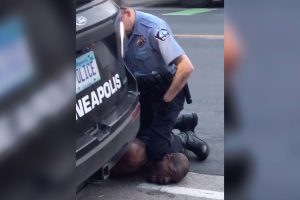The awful, brutal death of George Floyd at the hands of the Minneapolis Police this week has caused a media firestorm and public outrage. But the legal claim is challenging. Let me share how a civil rights lawyer analyzes the case.
The initial reports describe the police claiming Floyd become combative after they approached him about a counterfeit bill charge. The police applied handcuffs and forced him into a prone restraint on the asphalt. A bystander’s video shows an officer applying his knee to Floyd’s neck. Floyd was yelling, “I cannot breathe!” The video shows multiple officers and numerous bystanders present. The media reports the police kept Floyd in a prone restraint for about eight minutes. The video shows his body is limp when transferred to emergency medical services.
Even with incomplete facts, we know enough for some preliminary conclusions.
• The police should never maintain a prone restraint.
The police officer put Floyd at unnecessary risk of restraint asphyxia by prolonging the facedown position while controlling his arms and legs. Floyd’s chest wall movement and ability to breathe was limited. Also, the force to the neck may have directly obstructed Floyd’s respiratory path.
• The cause of death is likely restraint asphyxia.
Responsible police officers know that prolonging a prone restraint will increase the risk of death. The prone restraint pressures a person’s intra-abdominal organs and diaphragm, causing fatigue, inability to breathe, and asphyxia. The police amplify the risk after a high-stress situation, such as an arrest, when the need for oxygen increases. Floyd likely became too tired to breathe, causing hypoxia, and cardiorespiratory arrest.
• The officers did not need to prolong the restraint.
The video shows the police had Floyd handcuffed. Multiple officers were on the scene to minimize the risk of escalation. Nothing shows the officers faced a situation requiring potentially lethal force. Even if some restraint were justified– and we do not know what led to the encounter- there is no reason the officers could not turn Floyd on his side to let him breathe.
• Any legal victory will be hard-fought.
Legal cases against the police are difficult. If there is no settlement, Floyd’s survivors can bring claims under state law and federal constitutional law. The family will likely prevail in a state law claim for unreasonable force. But proving shoddy police work does not guarantee success in a constitutional claim. A prudent civil rights lawyer looks for precedent where courts have found unconstitutional conduct in similar situations. Unfortunately, in a different case decided last month, the federal circuit for Minnesota found no established constitutional violation when officers used a prone restraint. The case is Lombardo v. City of St. Louis. The police will use the case to argue against the Floyd family’s constitutional claim.
Creative lawyering can make a difference in a police misconduct claim. Facts will develop with the investigation. Floyd’s lawyers must distinguish the unfavorable precedent and find a path to prevail in court. But any legal victory will come too late for George Floyd and his family.



